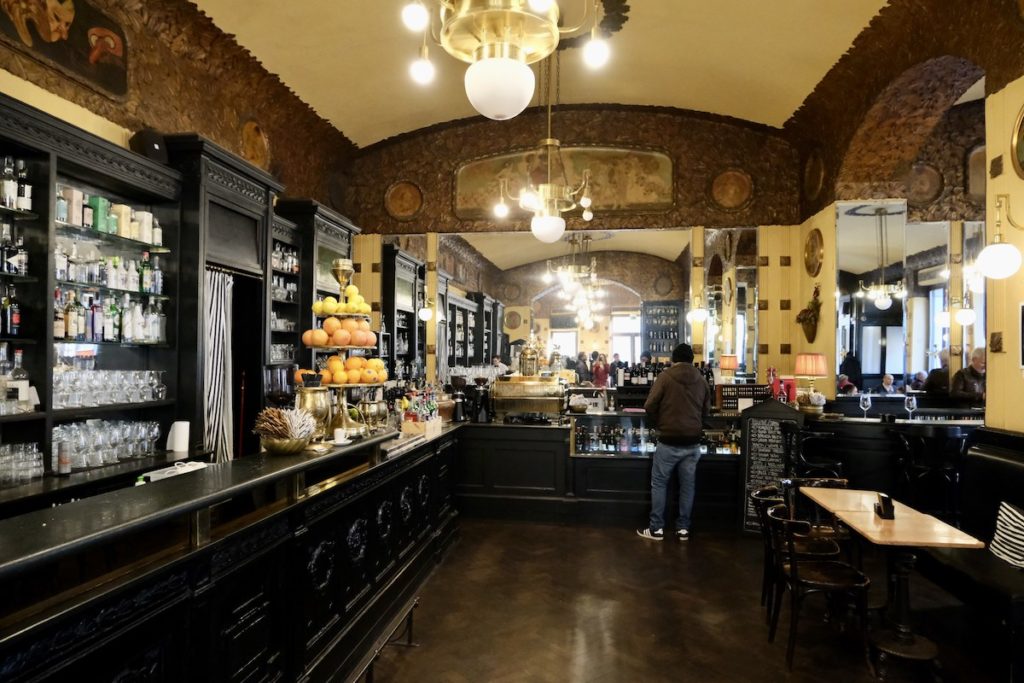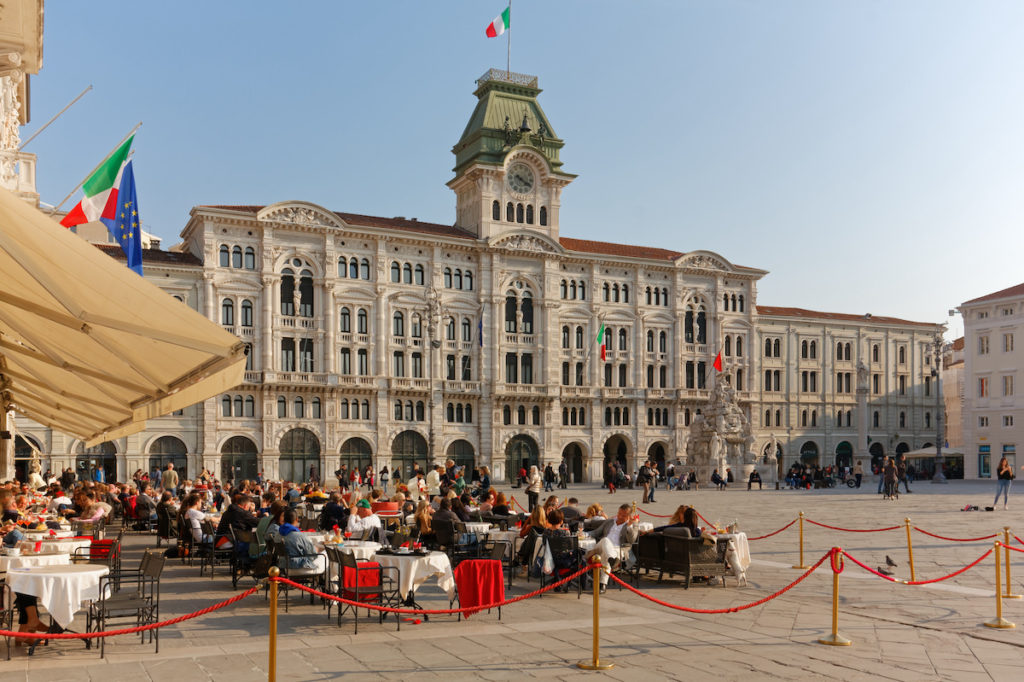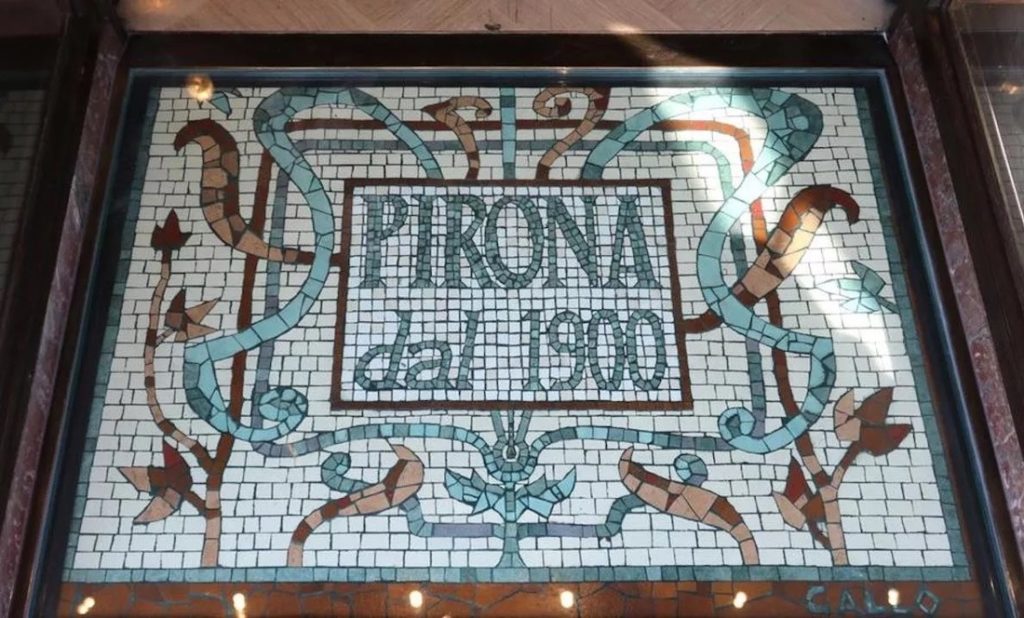Historic cafés of Trieste: 5 places not to be missed
Few places can portray Trieste like its historic cafés: on one hand the tradition of coffee, firmly linked to the city, on the other the historical literary scene and those famous names from Trieste who loved to meet right here, in front of a cup, to discuss topics of culture, politics and current events.
Umberto Saba, Italo Svevo, James Joyce are just some of the intellectuals who used to hung out at the historic cafés in Trieste, the main meeting places for the local middle-class. Several of these places still survive today and keep intact all their charm and atmosphere of the Habsburg era, becoming stops not to be missed during a weekend in the city.
An important thing to keep in mind is that in addition to being among the biggest consumers of coffee in Italy, the people of Trieste also have their own language to order this drink: the espresso here becomes “un nero” and the macchiato “un capo“. To enjoy an excellent “capo in b” – macchiato in a glass – and take a dip in the history of the city, here are five addresses of historic cafés to visit in Trieste.

Discovering the historic cafés of Trieste: the places not to be missed
Caffé Tommaseo, Piazza Tommaseo
Our tour of the historic cafés in Trieste can only start from the oldest café in the city. The Caffè Tommaseo, opened in 1830, welcomed Italo Svevo, Umberto Saba, and more recently also Claudio Magris who wrote his “Danubio” right here. The restaurant has remained in the history of Trieste also as one of the first buildings to use electricity – as well as for importing ice cream in the city in 1845. Since 1954 Caffè Tommaseo has been awarded the important recognition of “Italian historical place”, which protects it as a historical and artistic monument of Trieste.
Caffè degli Specchi, Piazza Unità d’Italia
The Caffè degli Specchi is the Caffè, the true salon of Trieste high society with its outdoor tables in Piazza Unità d’Italia. Opened since 1839, it owes its name to the mirrors that allowed the room to make the most of natural light to save on oil lamps. Today there are only three mirrors left, but the coffee retains all its charm and elegance of the past and is a great place from which to observe the comings and goings of the people of Trieste, or wait for the sunset with a beautiful sea view.

Caffè San Marco, Via Battisti
Opened in 1914, the Caffè San Marco was destroyed a year later by the Habsburg army. In the cafes of Trieste culture was often intertwined with politics and during the Great War this meeting place was particularly known for the printing of fake passports for anti-Austrian patriots. Renovated after the conflict by Assicurazioni Generali, it returned to shine as and more than before and today is one of the most beautiful historic cafes in Trieste, with decorations by artists such as Vito Timmel and Napoleone Cozzi. For some years now there is also a library where events and presentations are held, to celebrate once again the link between coffee and literature.
Caffè Pirona, Largo della Barriera Vecchia
If you ever wonder what it’s like to sit at the table where a masterpiece of literature has been conceived, Caffè Pirona is the place for you. James Joyce lived only a few meters away along the street and was a regular visitor to this café, known for its Viennese pastry shop. So, between one dessert and another, right at the tables of the Caffè Pirona Joyce wrote his ‘Ulysses’ and it is not difficult to find the same magic by visiting the place today and admiring its Art Nouveau furnishings.

Caffè Stella Polare, Via Dante Alighieri
James Joyce also loved to attend the Caffè Stella Polare, near the Berlitz school where he taught. Not surprisingly, in this area, along the Grand Canal of Trieste, there is the statue of Joyce, one of the works that the city has dedicated to its most famous writers. Although it has undergone several transformations over the years – during the Second World War the Americans gave life to a popular ballroom, for example – the restaurant retains its classic Viennese furnishings. The perfect atmosphere to conclude our tour through the historic cafés of Trieste, with a last capo full of history.


Leave a comment